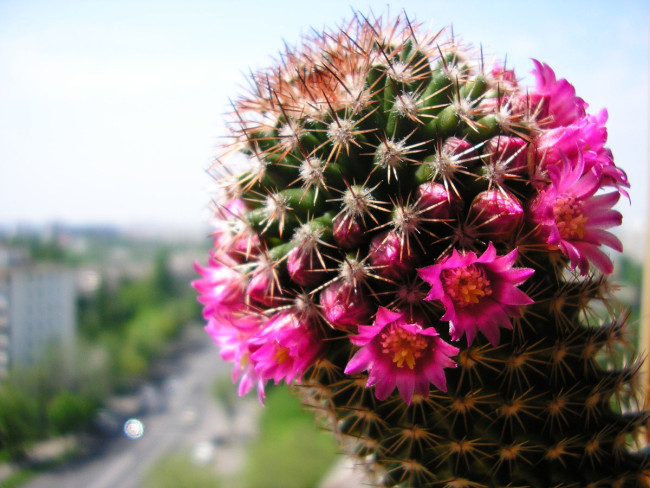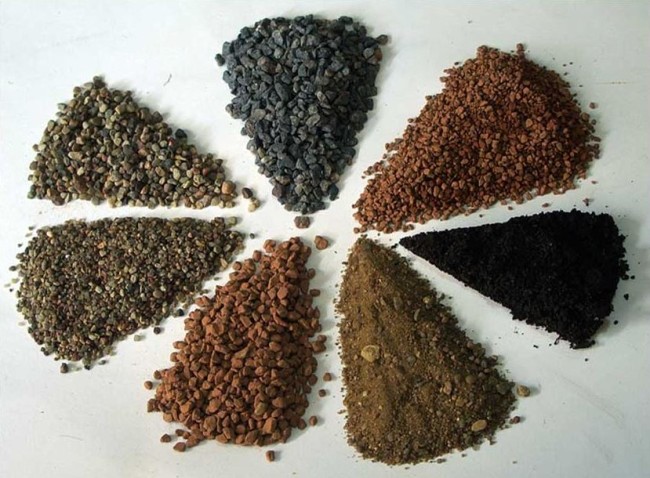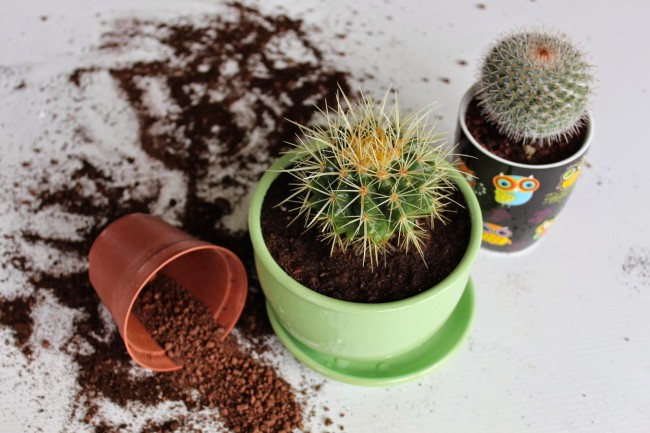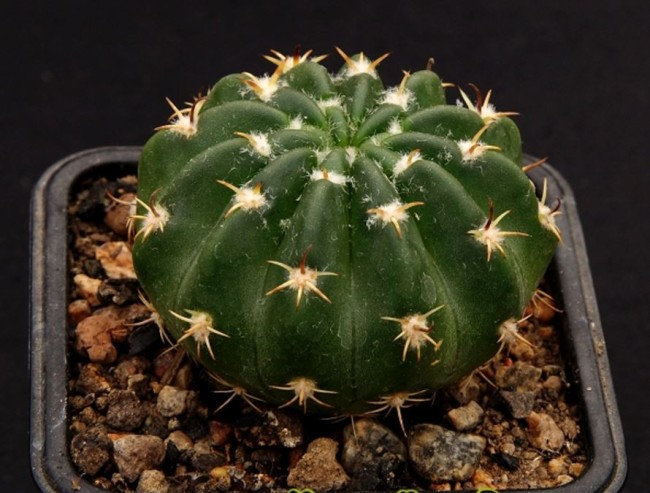For a beginner cactus, it is important to learn how to transplant a cactus. It is worth considering that in the absence of a competent approach, this event may be unsafe for both him and for a indoor cactus. There are certain rules for transplanting these exotic plants that must be studied in order to adhere to in the future. If you do this procedure correctly, in the process of growing, cacti will feel great and delight you with their appearance.
Content
How to transplant a cactus: why a transplant is needed
Cacti are unusual plants - from tiny with large spectacular flowers to giants a few meters high, blooming quite inconspicuously. It should be noted that the principles of growing cacti are fundamentally different from the rules for caring for deciduous indoor plants. Much will have to be done exactly the opposite. The correct selection of soil with the subsequent transplant of the cactus is a very responsible process that largely determines the further development, growth and flowering of this plant.
Often, a person who first occupied the cultivation of a cactus has the question of what exactly he did wrong. A couple of months ago, a purchase was made (in a store, greenhouse, in the bazaar) in the form of a cactus, then the plant stood for some time and died. The thing is that after buying a cactus, it is necessary to ensure that it successfully adapts to home conditions. The fact is that most of the cacti sold are grown in greenhouses using special stimulants that allow you to quickly get a plant with the desired product species. Nevertheless, you are unlikely to be able to provide the same conditions for a cactus for a cactus, in addition, during the sale process, the plant could pick up diseases like a spider mite or worm. Therefore, if you do not take care of it properly after the purchase, then the death of the plant is quite possible. If it still survives in such conditions, then it is unlikely to wait for abundant flowering in the future. To avoid such problems, you need to transplant a cactus at home.
In addition, plants are needed in a planned transplant, too much overgrown in pots, as a result of which it became crowded there. In the case of a significant number of cacti, it is convenient to carry out their massive transplant. Such an event should be planned in winter or early in the early spring - in this case, in the future, during the growing season you will not need to be distracted by transplant, because many events (regular watering, vaccination, diving, pitching) are not able to transfer to the winter period. From spring to autumn, active growth and flowering of cacti is observed, so post -bacon stress at this time can take too much effort from them. Some cactiovodes argue that the most suitable time for transplanting cacti is December, because in January many of them are already starting to lay buds, in which case it is undesirable to disturb them. Nevertheless, if necessary, you can transplant a cactus to another pot and during the growing season. Young cacti that have not reached the age of 3-5 years should be transplanted annually. In the future, it will be necessary to organize their transplant in a year. Epifite cacti need it after they bloom, annually. In addition, all cacti should be transplanted after flowering, which occurred at the end of the winter season or at the beginning of the spring period.
How to transplant a cactus: preliminary preparation
The just acquired cactus must be placed in quarantine for several days, i.e. Locate separately from the plants already in the premises. At the same time, it should not be watered. After the plant adapts in new conditions, you can proceed to its transplantation.
Before the planned transplantation of homemade cacti, you will also need to water them for 2-3 days. Otherwise, a certain amount of moisturized soil will be on the roots, and with the slightest injuries and cliffs of roots can negatively affect the health of the root system of the cactus, provoking the rotting of the roots.
How to transplant a cactus: pick up the soil
To grow a cactus, it is necessary to prepare loose soil - it is required that it passes moisture and air well. Grinistic soil, as well as sand, acts as the main component of the soil mixture for cacti - it is advisable to use large river (it will need to be sifted or washed). Suitable sand after wetting will not stick together with lumps, but will crumble. To loosen the soil, you can also add sifted and washed zeolite granules from the filler for cat toilets (those that do not feed), small expanded clay, crushed brick and gravel. As the main component of substrates for planting cacti, garden soil, as well as a universal soil mixture, is used. In addition, instead of the Earth, you can use a coconut substrate, since it is sufficiently loose, allows plant roots to breathe, while it is characterized by almost neutral acidity. It should be noted that the coconut substrate in briquettes as a result of getting wet can swell several times, so you need to first wet and dry it, and then add to the soil. In order to properly transplant the cactus, it is necessary to prepare not too cold and not damp (dried or moist, gathering in lumps when compressed, but crumbly) soil mixture.
How to transplant a cactus: prepare drainage
For a cactus, you need to provide drainage. It is especially necessary in cases where the pot is equipped with a small diameter, or if several cacti are planted at once. It should be noted that drainage holes do not always save the roots from oversaturation with water and subsequent decay, since the flower pot is usually placed in the pallet into which excess water flows, and it is not always able to drain it on time. Thus, you need to place a drainage layer in the planting container, which is about 1/3-1/6 from the volume of the pot. To do this, you can use expanded clay water, crushed crushed stone or brick washed with hot water, as well as pieces of wine traffic jam with a size of 4-5 mm or foam. You can also add an egg shell crushed in a coffee grinder to the drainage. It should be noted that when transplanting plants, the old drainage must be thrown away, since salts accumulate on it.
How to transplant a cactus: soil preparation and pot
If you transplant a healthy plant, a new fit for planting should be selected with a size of a little larger than the previous one. A slowly growing cactus can be transplanted into the same pot, simply replacing the soil with a new portion. Before proceeding with landing, the pot should be disinfected, pouring it with boiling water. The soil should warm in the oven for half an hour.
How to transplant a cactus: pull the plant out of the pot
Having prepared everything you need for a transplant, you will need to carefully extract a cactus from a pot. To do this, it is convenient to use plastic tweezers. In addition, you can apply kitchen sponges, wire or a strip of paper rolled into several layers (they should wrap a prickly plant). Next, you need to turn the pot, knock on its bottom and carefully pull out the cactus. If the plant “clipped” to the plastic container, you should slightly “squeeze” it so that the earth moves away from the pot. In addition, you can separate it from the walls with a knife.
How to transplant a cactus: landing
When transplanting cacti, it is worth considering the following recommendations:
- a healthy cactus has a developed root system, therefore it is taken out of the pot along with the earthen lump and roots intertwined with it. If the roots break off, rotting or dead roots are visible, this indicates that the plant is sick, since it is weakened due to inappropriate conditions of content, especially overlapping. If damaged roots (rotten, as well as dead) are discovered during the cactus transplant, they will need to be cut into small scissors. Slices of the roots should be sprinkled with wood ash. In this case, it is necessary to place the plant in a smaller pot, and add more sand to the soil, mixing it with small pieces of charcoal;
- if the roots of the cactus are tightly braided by an earthen lump, it is not worth tearing pieces of land. It will be necessary to move it to a new planting container and add more soil there. If you purchased the plant in the store, most likely it is planted in peat, which is not suitable for the constant growth of cacti. Therefore, it will be necessary to remove the remains of the old soil mixture and move the plant to more suitable conditions for it. If the remnants of the peat is difficult to remove, the roots of the cactus in warm water should be soaked, and then carefully remove the remaining peat fibers;
- a drainage layer is laid in the landing container at the bottom, and then a small layer of the prepared substrate at room temperature. After that, you can start planting a cactus. It needs to be placed in such a way that the basal neck is slightly lower than the top of the pot. The cactus roots should be carefully straightened, it is necessary to pour the substrate on top. You should not compact the soil, you will need to tap light slightly along the walls of the container so that the soil mixture is evenly distributed between the roots of the plant. The stem should not be immersed in the ground, otherwise its decay may develop after irrigation. In addition, due to the contact of the stem with moisturized soil, it may observe its loading in the form of a dry crust;
- in the presence of a fairly narrow basal neck, a cactus can be placed in a pot not too stable. To fix it, you need to lay the so -called upper drainage on the sides - small pebbles or pebbles. They should not be too small, otherwise the dense upper layer can create an obstacle to the penetration of air and drying of the soil;
- significant plants that cannot be fixed with pebbles will need to be tied to the supports. Do not plant them in too large containers, as the soil can sour in them. So that the pot with a large -sized cactus does not roll over, a load in the form of a stone should be laid on the bottom.
Having transplanted a healthy plant, it should not be watered for three days. If its roots are damaged, you will need to refrain from watering for a week. After planting, it is necessary to put pots with cacti in a shaded place, in the sun they should not be exposed for several (4-5) days. If the air temperature in the room is at least 20 ° C, you can spray transplanted cacti from a finely dispersed spray gun, while the appearance of large drops of water and moisture flowing into the soil should not be allowed on their surface.
How to transplant a cactus-spin
To plant a cactus-spin, you will need to carefully separate it from the parental plant with a sharp pure knife. The cut process must be kept for at least three days in a cool and dark place. After its cut completely dries, it should be planted in a small pot (with a diameter of a few centimeters more than that of a cactus), in moistened sandy soil. The process should be attached to it with a cut without sprinkling on top. In the future, periodic watering will be required, which should be performed as accurately as possible until the cactus lets strong roots. After rooting, it will be necessary to transplant the cactus-spin in a pot with a drainage layer and substrate. In the center of the pot, you will need to make a small recess in the soil to place a young cactus in it. Its roots are slightly sprinkled with substrate, without compacting.



















Comments
a couple of years ago, there was no side of metrogils from the same problem, there were no side effects ...
I’m not a fan of peeling at all, it saves from acne of metrogil, it also smoothes it ...
Great article! ...
I take the second course of the Capsules Climafite 911. The tides went very quickly. It became calmer, irritability went away and I sleep well ...
i also noticed - it is worth nervous, everything immediately affects the face. Therefore, I try to avoid conflicts and unpleasant people. Of the creams, I like Miaflow from wrinkles - smoothes not only small wrinkles ...